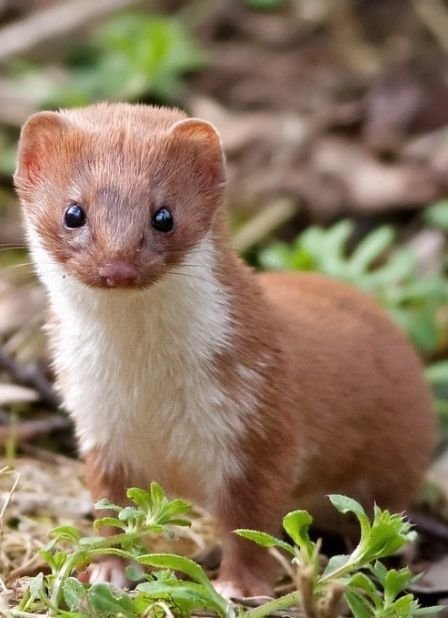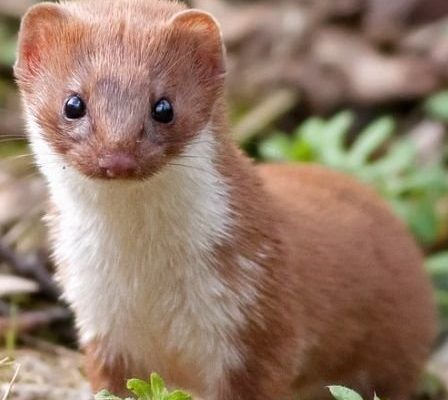
Let’s dive into those beliefs that might lead you astray. Think of it like peeling back the layers of an onion. The more you learn about the stoat, the more you appreciate its true nature. By the end of our chat, you’ll be armed with knowledge that can clear up some common misunderstandings about these clever creatures.
The Stoat Is Just a Weasel in Disguise
One of the biggest misconceptions is that the stoat is simply a type of weasel. While they are related, they belong to different species. Stoats (Mustela erminea) are part of the Mustelidae family, just like weasels (Mustela nivalis). However, they have distinct characteristics. For example, stoats tend to be slightly larger, with longer bodies and a more pronounced face.
Think of it this way: while all squares are rectangles, not all rectangles are squares. In the animal kingdom, classification can be just as tricky. Stoats can be recognized by their unique coats, which change from brown in the summer to white in the winter in colder climates. This makes them beautifully adapted to their environments, but it doesn’t make them just another weasel.
Stoats Are Only Found in Cold Climates
Another myth is that stoats are exclusive to cold, snowy regions. Yes, they do thrive in colder climates, but they’re also found in a variety of habitats, including woodlands, grasslands, and even suburban areas. Stoats have a remarkable ability to adapt, which is why you might spot one near your garden or local park.
Let’s imagine a stoat chilling in your backyard. With their excellent climbing skills and quick reflexes, they’re not just lurking in the snow. They can hunt small rodents and birds in diverse environments, showcasing their versatility. So, whether you live in a bustling city or a quiet rural area, there’s a chance you might catch a glimpse of these crafty creatures.
Stoats Are Dangerous to Humans
You might hear that stoats are fierce predators, even dangerous to humans. This couldn’t be further from the truth. Stoats are small animals, typically weighing less than a pound, and generally avoid confrontations with larger creatures, including humans. They’re not interested in attacking people; instead, they focus on catching small prey like mice or rabbits.
Honestly, the only danger you might face from a stoat is a little nibble on your garden if they find something tasty. So, if you encounter one, it’s best to give them space. These little hunters are much more interested in their next meal than in bothering you.
All Stoats Are Brown and White
You might picture stoats as just brown and white little furballs, but there’s more to their color palette. While their seasonal coat change is quite famous, stoats in different regions can have a range of shades. For instance, some stoats may display darker or lighter variations, influenced by their specific habitats.
Here’s the thing: these color changes aren’t just for show. They serve a purpose. In winter, the white fur helps them blend in with the snow, making it easier to hunt while remaining hidden from predators. In summer, the brown coat allows them to merge into the earthy landscape. It’s nature’s way of ensuring survival.
Stoats Are Solitary Creatures
Many people believe that stoats are solitary animals. While they do enjoy their alone time, especially when hunting, they also have social behaviors and can be seen in small family groups. During the breeding season, male and female stoats come together, and mothers often take care of their young collectively.
Think of it like a neighborhood BBQ. While everyone enjoys their own space, they still gather for community events. Stoats can be social when it comes to family, creating a strong bond with their offspring. This dual nature—both solitary and social—adds another layer to the stoat’s personality.
Stoats Are Just Small Creatures
While stoats might be small, their impact on the ecosystem is anything but. These agile hunters play a vital role in controlling rodent populations, helping balance the food web. It’s easy to underestimate them because of their size, but they are fierce little predators.
Imagine a tiny creature packing a punch in terms of ecological importance. By keeping prey populations in check, stoats contribute to a healthier environment. So, even though they’re small, their role is crucial. Never let their size fool you—they’re mighty in more ways than one!
The Stoat Is a Pests to Farmers and Gardeners
Finally, there’s a belief that stoats are nothing but pests for farmers and gardeners. Sure, they might munch on a few chickens or birds. But the truth is, they also help control populations of rodents that can damage crops or invade homes.
You might consider them more like a balanced player on the agricultural field. By keeping those pesky rodents at bay, stoats can actually work in harmony with local farmers. It’s all about finding that balance in nature, where every creature, big or small, plays its part.
In summary, stoats are fascinating and misunderstood creatures. They’re not just small weasels, nor are they dangerous pests. Instead, they’re adaptable, important animals that contribute significantly to their ecosystems. The next time you hear a myth about stoats, remember this chat over coffee. With a little understanding, you can appreciate these remarkable creatures and their role in the world.

